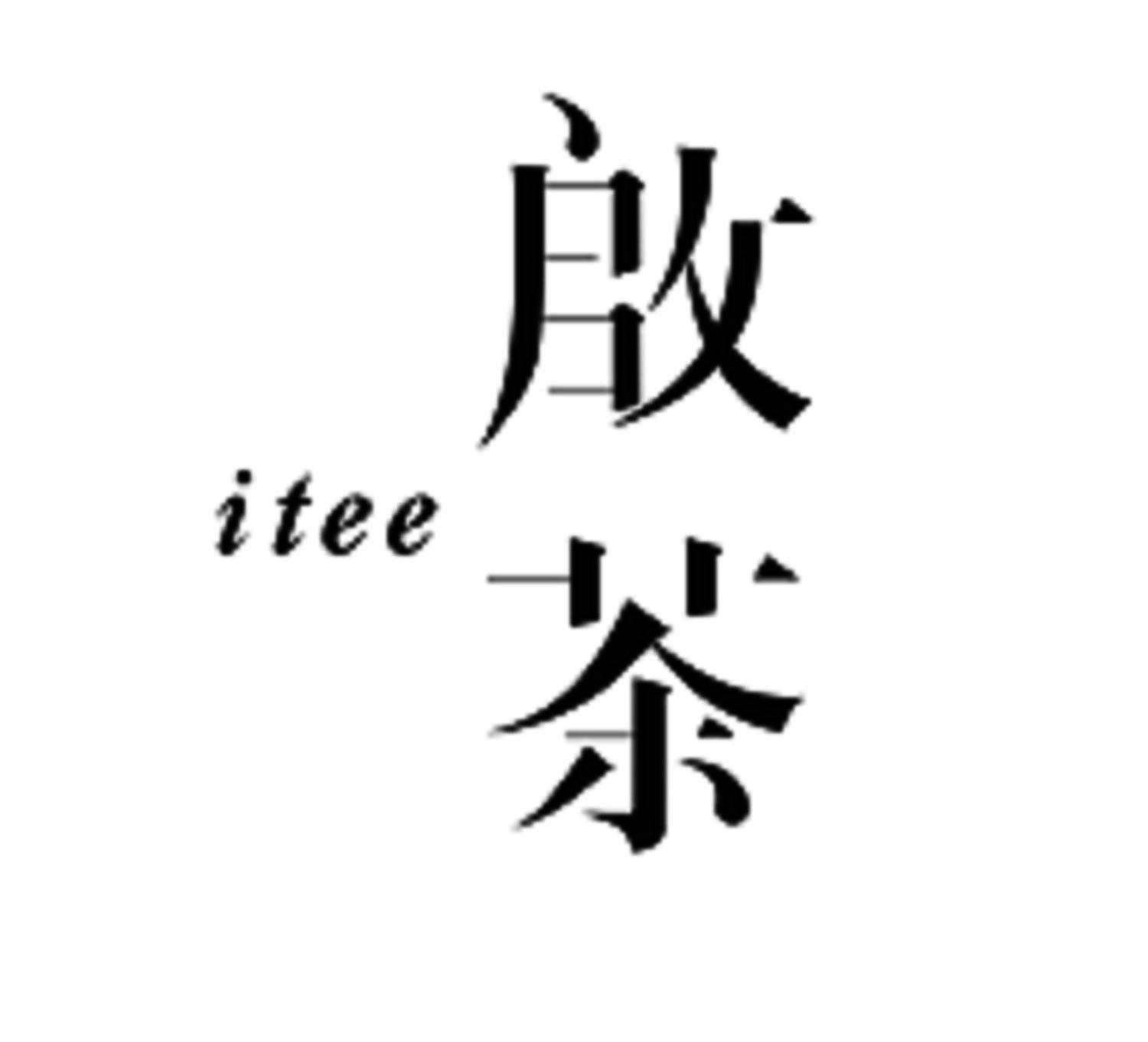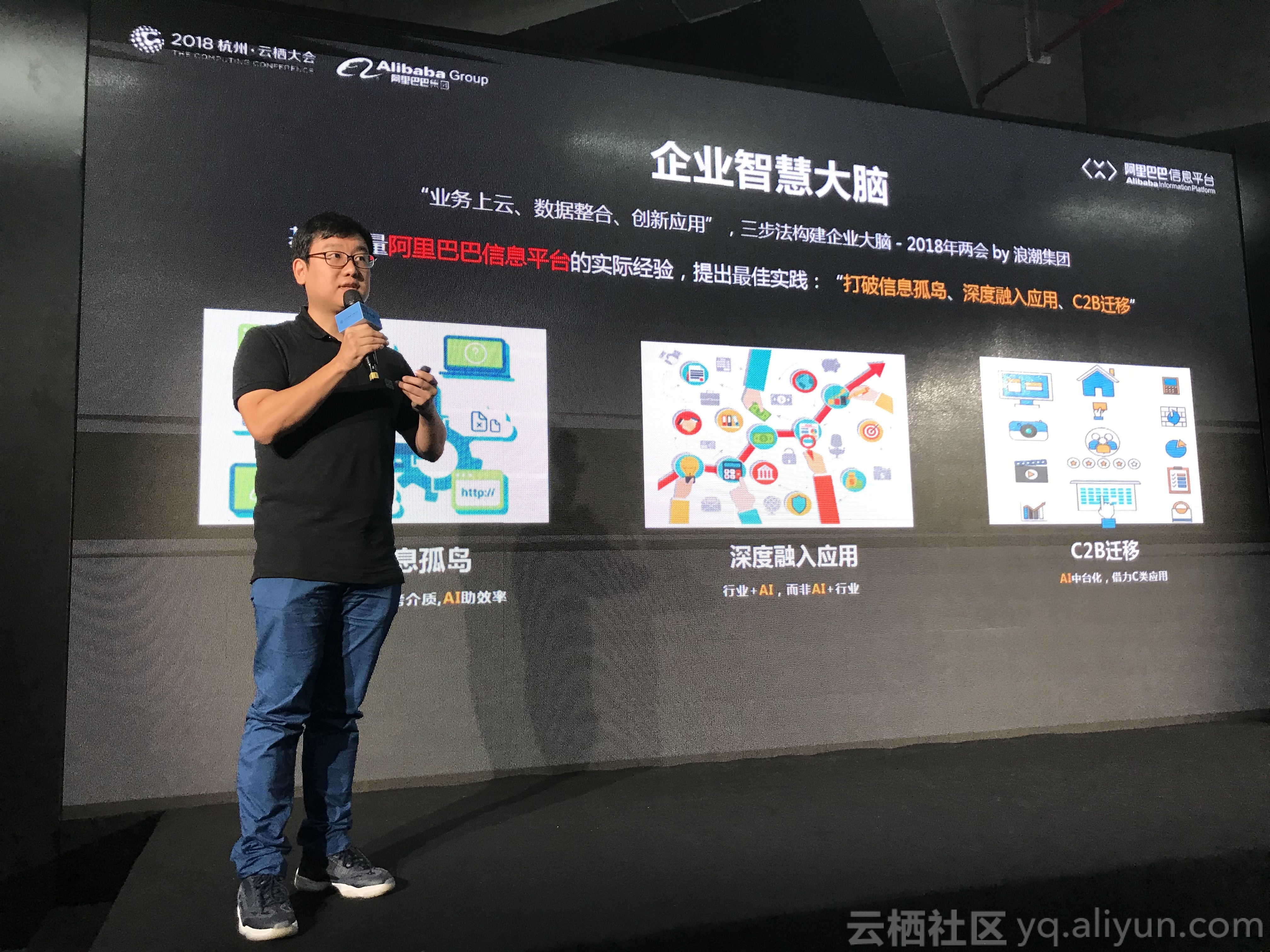一种基于计算机视觉的摄像机智能火灾检测方法 (英文论文翻译 )
英文版论文原文:%
An fire based on
Hao Wu, Wu& Zhao
火灾是石油和化工厂中最严重的事故之一,可能会导致相当大的生产损失,设备损坏和人员伤亡。传统的火灾探测是由操作员通过石油和化学设施中的摄像机完成的。然而,对于大型化学设施中的操作者而言,及时发现火灾是不切实际的工作,因为可能安装了数百台摄像机,并且操作员在轮班期间可能承担多项任务。随着计算机视觉的飞速发展,智能火灾探测已引起了学术界和工业界的广泛关注。在本文中,我们提出了一种新颖的通过摄像机的智能火灾探测方法,可防止化工厂和其他高火灾风险行业失控火灾隐患。该方法包括三个步骤:运动检测,火灾检测和区域分类。首先,通过背景减法通过摄像机检测运动物体。然后,由可检测出火灾区域及其位置的火灾探测模型确定带有运动物体的框架。由于可能会生成假着火区域(某些类似于火的物体),因此使用区域分类模型来识别它是否是着火区域。一旦在任何摄像机中出现火灾,该方法就可以对其进行检测并输出火灾区域的坐标。同时,即时消息将立即作为火灾警报发送给安全主管。该方法可以在精度和速度上满足实时火灾探测的需求。其工业部署将有助于在早期阶段发现火灾,促进应急管理,从而为预防损失做出巨大贡献。
Fire that is one of the most in and , may lead to , and 。 fire was done by video in and 。 , it is an job for the in a large to find out the fire in time there may be of video and the may have tasks his/her shift。 With the rapid of , fire has from and 。
In this paper, we a novel fire video for fire from going out of in and other high-fire-risk 。 The three steps: , fire and 。 At first, are by a 。 Then the frame with is by a fire model which can fire and their 。
Since false fire (some with fire) may be , a model is used to it is a fire or not。 Once fire in any , the can it and the of the fire 。 , will be sent to as a fire alarm。 The can meet the needs of real-time fire on the and the speed。 Its will help fire at the very early stage, the and to loss 。
1.
石油和化工厂的火灾可能会导致相当大的生产损失,设备损坏和人员伤亡。表1列出了自1988年以来的20大行业损失,其中一半事故是着火的(Nolan,2018)。早期的火灾探测可以有效地防止火势蔓延,并最大程度地减少火灾造成的损失。在室内环境中,烟雾报警器和火焰报警器广泛用于火灾报警。然而,这些传统的物理传感器具有许多限制。它们需要靠近火源,以使其无法在室外场景中工作(Shi等人,2017)。此外,他们通常需要将火燃烧一段时间才能产生大量烟雾,然后触发警报(Zhang et al。,2016)。此外,他们无法提供有关火灾地点和火灾规模的信息(等,2016)。在实际情况中,在大型工厂中安装了数百台摄像机,而在控制室中仅安装了几个监视屏幕。这意味着只能同时显示几个摄像机,而其他摄像机必须轮流显示。为了显示所有摄像机,可能需要数十分钟。在此期间,负责监视监控屏幕的操作员可能会发生火灾事故并错过火警事故。另外,操作人员通常还有其他任务,例如监视DCS控制系统。因此,迫切需要开发一种自动检测火灾隐患的新方法。
Fire in and may lead to , and 。 Table 1 lists the 20 since 1988 and half of the had fire (Nolan, 2018)。 Fire at the early stage can the of fire and the by fire。 In , smoke and flame are used for fire 。 , these have a of 。
They a close to fire so that they work for the (Shi et al。, 2017)。 , they the fire to burn for a while to large of smoke and then the alarm (Zhang et al。, 2016)。 , they about fire and fire size ( et al。, 2016)。 In , there are of video in a large and only a few in a room。
This means that only can be and the other have to take turns to be 。 In order to all of the , it may take of 。 this , fire may occur and be by the human who is in of the 。 In , the human often have other tasks such as the DCS 。 , there is an to a new to the fire 。
Table 1
随着数码相机技术和计算机视觉技术的飞速发展,已经提出了智能视频火灾探测方法,并在一些行业中得到应用。 视频火灾探测的发展经历了两个阶段。 最初,通过使用颜色模型和手动设计的功能进行火灾探测(Chen等,2004; Horng等,2005; 等,2006;Töreyin等,2006; Celik和Kai- Kuang,2008; Celik,2010; 等,2015)。 他们专注于火焰的颜色和形状特征。 常规的视频火灾检测方法通过提取多维特征向量并将特征向量分类为“火灾”或“非火灾”类来解决该问题。 但是,由于区分特征提取器是手工设计的,因此这些方法不够鲁棒,并且难以满足不同场景的需求。
With the rapid of and , video fire have been and in some . The of video fire has gone two . At the , fire was done by using color model and hand- (Chen et al., 2004; Horng et al., 2005; et al., 2006; Töreyin et al., 2006; Celik and Kai-Kuang, 2008; Celik, 2010; et al., 2015). They on color and shape of . video fire the by a multi- and the into “fire” or “non-fire” class. , since the were hand-, these were not and were to meet the needs of .
在2012年著名的大规模视觉识别挑战赛()中,使用深度卷积神经网络(CNN)的模型(和,2012年)赢得了冠军。从那时起,CNN带来了计算机视觉和模式识别方面的一场革命。 CNN能够在一个网络内执行特征提取和分类。 CNN还可以取代手工设计的功能并了解对象的完整特征。为了获得更好的检测性能,近三年来提出了一些基于卷积神经网络(CNN)的视频火灾检测方法。 等。 (2016年)提出了用于视频火灾和烟雾检测的CNN。结果表明,基于CNN的方法比一些相关的常规视频火灾检测方法具有更好的性能。张等。 (2016年)提出了一种基于CNN的森林火灾检测方法。该检测以级联方式进行。首先,通过全局图像级别分类器测试来自摄像机的帧,如果检测到火灾,则遵循细粒补丁分类器来检测火灾补丁的精确位置。 Wang等。 (2017)开发了一种基于CNN和支持向量机(SVM)的新颖方法。他们用SVM替换了完全连接的层以执行分类任务。它显示出比纯CNN更好的性能。 等。 (2017)提出了一种基于,局部二进制模式(LBP)和CNN的检测级联方法。
In the Large Scale () in 2012, ( and , 2012), the model that used a deep (CNN) won the 。 Since then, CNN has about a in and 。 CNN has the to and one 。 CNN can also the hand- and learn the of 。 To , some (CNN) based video fire have been over the past three years。
et al。 (2016) a CNN for video fire and smoke 。 The that CNN based than some video fire 。 Zhang et al。 (2016) a CNN based for fire 。 The was in a 。 At first, the frame from a is by the image-level , if fire is , the fine patch is to the of fire 。
Wang et al。 (2017) a novel based on CNN and (SVM)。 They the fully layer with SVM for the task。 It than the pure CNN。 et al。 (2017) a based on , local (LBP) and CNN for 。
尽管它们具有出色的火灾探测性能,但在实际应用中仍然存在一些局限性。前述方法利用CNN作为分类器,因此它们只能检测图像中是否存在火灾。由于几乎所有像素都是背景,因此几乎不可能知道起火的位置,并且很难从相机检测大图像中的小起火。其中一些(等,2017; Wang等,2017)必须使用常规的手工设计特征提取器提取感兴趣区域(ROI),然后检测ROI中的火灾。但是,这违反了用CNN替换手动设计的特征提取器的目的,并且该方法无法了解火焰的全部特征。他们中的一些人(等人,2016; Zhang等人,2016)利用滑窗方法克服了这一问题。原始图像分为许多补丁,每个补丁由CNN检测。补丁大小是固定的,通常小于射击大小。结果,补丁分类器也无法学习火焰的全部特征。此外,应通过CNN网络计算每个生成的ROI或补丁。由于CNN的计算会花费大量时间和硬件资源,因此在没有良好硬件资源的情况下,这些方法在检测速度方面仍然不能令人满意。此外,这些方法并未考虑到应用中有许多与火灾相似的对象。因为他们的CNN模型着重于火灾图像和非火灾图像之间的分类,所以类似火灾的物体可能会导致过多的错误警报。
their for fire , there were still some the 。 The CNN as a so that they can only fire in an image or not。 It is to know the fire and it is to a small fire in a large image from a most of the are the 。 Some of them ( et al。, 2017; Wang et al。, 2017) had to use hand- to the of (ROI), then the fire in the ROI。
, this the of the with CNN, and the doesn’t learn the of the flame。 Some of them ( et al。, 2016; Zhang et al。, 2016) a slide to this 。 The raw image is into many and each patch is by CNN。 The patch size is fixed and less than the fire size。 As a , patch also learn the of the 。
, each of the ROIs or be via the CNN 。 Since the CNN costs lots of time and , these are still not in term of speed when there is not a good 。 , these didn’t that there are many with fire in 。 their CNN model on the fire and non-fire , the fire-like might lead to too many false 。
在本文中,我们提出了一种新颖的智能火灾探测方法,旨在实现高探测率,低误报率和高速度。 为了减少CNN的计算,我们增加了一种运动检测方法。 仅当出现移动物体时,才会执行以下计算。 为了代替手工设计的特征提取器或滑动窗口方法来生成ROI,我们使用了基于CNN的目标检测方法来直接生成火灾区域。 然后,我们着重于火灾图像和类火图像之间的分类,以避免误报问题。 本文的其余部分安排如下:第2节介绍了建议的方法。 第三部分显示了实验结果,最后第四部分总结了本文。
In this paper, we a novel fire , which aims to high rate, low false alarm rate and high speed. In order to the CNN , we added a . Only if , the will be . To the hand- or the slide for ROI , we used an based on CNN to fire . Then we on the fire and fire-like to avoid the false alarm . The rest of this paper is as : 2 the . 3 shows the and 4 this paper.
2. 2.1.
近年来,随着深度学习(DL)和人工智能(AI)的飞速发展,计算机视觉引起了学术界和工业界的极大关注,并取得了惊人的成功。 在此期间,最重要的事件是深层CNN的出现。 CNN最早是在1980年代后期提出的(LeCun等,1989),以取代传统的手工设计特征描述符,例如尺度不变特征变换(SIFT),定向梯度直方图(HOG)和局部二进制模式(LBP)。。 2012年,一个名为的CNN架构(和,2012年)赢得了大规模视觉识别挑战赛()的冠军,并且错误率仅次于第二模型。 从那时起,CNN带来了计算机视觉和模式识别方面的一场革命(LeCun等,2015)。 现在,CNN已成为计算机视觉乃至机器学习任务中的主要方法。
, with the rapid of deep (DL) and (AI), has drawn from and , and has . this , the of deep CNN was the most event. CNN was first in the late 1980s (LeCun et al., 1989), to the hand- such as scale (SIFT), of (HOG) and local (LBP). In 2012, a CNN named ( and , 2012) won the of the Large Scale () and half the error rate of the -best model. Since then, CNN has about a in and (LeCun et al., 2015). Now CNN has the in and even tasks.
图1. 计算机视觉领域中的三个任务。
Fig. 1. Three tasks in .
在计算机视觉领域,有三个主要任务,分别是图像分类,对象检测和实例分割。 其中,图像分类已使用数据集进行了全面研究。 图像分类旨在识别图像的类别(参见图1(a))。 在此任务中,使用基于CNN的方法的计算机性能已经超越了人类。 物体检测旨在检测和定位图像中的物体(见图1(b))。 这意味着模型将输出对象的标签及其坐标。 此外,实例分割采用对象检测方法从一个图像中构筑出不同的实例,然后使用语义分割方法标记不同实例区域中的每个像素(见图1(c))。
In , there are three main tasks, which re image , , . Among them, image has been with the . Image aims to the of the (see Fig. 1(a)). In this task, the of using CNN based has . aims to and in (see Fig. 1(b)). This means that the model will the of and their . , from one image with , and then uses to mark each pixel in areas (see Fig. 1©).
在我们的方法中,图像分类和目标检测方法相结合来处理火灾检测。图像分类依赖于CNN模型,其输入和输出分别是图像和预测标签。对于我们作为二进制分类问题的方法,如果我们将火警图像输入到CNN,则网络将输出2长度的矢量,例如[0.1,0.9]。 “ 0.1”表示在输入图像中不发射的可能性,而“ 0.9”表示发射的可能性。这样,CNN可以预测图像的标签。 CNN的基本体系结构是几层的堆栈,例如卷积层,池化层,批处理规范化层和完全连接的层。最近,研究人员提出了一些性能更高的模块,例如初始(等人,2015,2016),残差(He等人,2016)和模块(,2017)。但是,来自相机的大多数帧都包含很多背景,这可能会干扰标签预测。因此,我们利用物体检测来直接检测帧中的着火区域。有两种类型的对象检测方法:两阶段方法和一阶段方法。两阶段方法基于区域提议,包括R-CNN(等,2014),Fast R-CNN(,2015), R-CNN(Ren等,2017)等。这些方法将物体检测分为两部分。首先,它们会生成许多可能存在对象的区域建议。然后将每个区域建议输入到CNN模型中,以预测区域建议的标签并调整其坐标。一阶段方法将检测任务视为一种回归问题,包括YOLO(您只看一个)(等人,2016,2017),SSD(Liu等人,2016)等。这些方法将输出类对象的概率和坐标。由于两阶段方法会生成许多区域建议,并且每个区域建议都需要输入到网络中,因此检测将占用大量时间和计算资源。一阶段方法可以实现更快的检测速度,但是其准确性比两阶段方法要低一些。在我们的火灾探测任务中,考虑到实时速度,我们选择YOLO方法进行目标探测。
In our , image and are to deal with fire 。 Image on a CNN model, the input and the of which are and 。 For our as a issue, if we input a fire image to CNN, the will a 2- like [0。1, 0。9]。 “0。1” means the of non-fire in the input image and “0。9” means the of fire。 In this way, CNN can the of 。
The basic of CNN is a stack of , such as , , batch and fully 。 , some with have been by , such as ( et al。, 2015, 2016), (He et al。, 2016) and (, 2017)。 , most of from lots of , which may the label 。 , we to the fire in 。
There are two of for : two-stage and one-stage 。 Two-stage are based on , R-CNN ( et al。, 2014), Fast R-CNN (, 2015), R-CNN (Ren et al。, 2017), etc。 These the into two parts。 At first, they many where may exist。 Then each will be input into a CNN model, to the of and their 。
One-stage the task as a , YOLO (You only look one) ( et al。, 2016, 2017), SSD (Liu et al。, 2016), etc。 These will the class and of 。 the two-stage many and each of them needs to be input to the , the will take up lots of time and 。 One-stage can speed but the is a lower than two-stage 。 In our fire task, the real-time speed, we YOLO for the 。
2.2.
图2. 智能视频火灾检测方法的框架。
Fig. 2. of the video fire .
图2显示了所提出的智能火灾探测方法的框架。该方法有两个关键步骤,分别是基于对象检测方法的火灾检测步骤和基于图像分类方法的区域分类步骤。在申请之前,我们应该为这两个步骤训练两个CNN网络。在应用阶段,通过背景扣除方法捕获并处理来自监视摄像机的视频,该方法可以从静态场景中检测运动物体。如果出现移动物体(火灾是移动物体),则经过训练的火灾探测网络将处理当前帧。网络将直接预测火灾区域的概率和坐标,即ROI。但是,在此步骤中,网络可能会生成一些错误的ROI,例如红色/橙色/黄色的衣服,头盔,灯等。我们继续使用受过训练的区域分类网络来识别每个生成的ROI是否是火区或不。这样,一旦当前帧中出现火灾,该方法便可以找到火灾区域。同时,火灾区域所在的框架将立即发送给安全主管,作为火灾警报。在下面的部分中,将详细描述背景扣除,火灾检测和区域分类。
Fig。 2 shows the of the fire 。 The has two key steps, which are fire step based on and step based on image 。 the , we train two CNN for these two steps。 At the stage, from are and by the , which can from 。 If (fire is a ), the frame will be by the fire 。
The will the and of fire , which are ROIs。 , in this step, the may some false ROIs such as red// , , , etc。 We to use the to each of the ROIs is a fire or not。 In this way, once fire in the frame, the can find the fire 。 , the frame where the fire is will be sent to as a fire alarm。 In the part, the , fire and will be in 。
2.3.
图3. 视频流的背景减法过程
Fig. 3. for video .
计算服务器从室外监控摄像机捕获视频流。背景扣除的目的是消除大多数静态图像帧并减少图像计算的资源,因为网络是在GPU上进行计算以加快速度。早期的背景扣除方法基于高斯混合模型(GMM)(Power and ,2002; and ,,2003)。此外,为提高GMM的自适应速度,和于2002年开发了高斯自适应混合方法。一项研究表明,基于KNN的方法在简单的静态场景中具有更好的性能(和Van Der ,2006)。这种方法更适合我们在室外静态场景中的火灾探测任务。视频流捕获和背景减法由实现,是一个开源计算机视觉库。图3说明了整个背景扣除过程。首先,为消除图像噪声,将高斯模糊应用于一个视频流的原始帧(请参见图3(a))。之后,在图3(a)中实现了基于KNN的背景减法。我们可以捕获移动物体(例如火和人),它们是图3(b)中的白色区域。但是我们可以发现在图3(b)中有一些灰色区域(在绿色圆圈中),因此我们将图像二值化并在图3(c)中用白色标记运动对象。最后,使用形态学的闭合操作将少量离散区域组合成一个完整区域(红色圆圈中)。以这种方式,在图3(d)中检测到整个移动物体。
Video are from by a 。 aims to most of image and the of image , the are on GPUs to the speed。 The early for were based on Model (GMM) (Power and , 2002; and , , 2003)。 , to the speed of GMM, the of was by and in, 2002。
A study that KNN based has on ( and Van Der , 2006)。 This is more for our fire task in 。 The video and the are by , which is an open 。 Fig。 3 the whole 。 First, to the noise of , blur is on the from one video (see Fig。
3(a))。 After that, KNN based is on Fig。 3(a)。 We can the (such as fire and ), which is the white in Fig。 3(b)。 But we can find that there are some grey (in the green ) in Fig。 3(b), so we this image and mark the with white color in Fig。 3©。 , of is used to into a (in the red )。 In this way, the whole is in Fig。 3(d)。
在火灾探测方法中,我们将计算整个帧中白色区域的大小。 我们将设置一个阈值n,如果白色区域(运动物体)的大小超过阈值,将执行下一个检测步骤。
In the fire , we will the size of white in the whole frame. We will set a n and if the size of white ( ) the , the next steps will be .
2.4. Fire
火灾探测模型是我们方法中的关键步骤之一。 此模型将从背景减法步骤中处理带有移动对象的帧,并在可能存在火灾的位置生成ROI。 火灾探测模型是通过YOLO方法开发的。 YOLO将对象检测框架化为空间分隔边界框和相关类概率的回归问题。 它训练像CNN这样的单个神经网络,直接在一次评估中根据图像预测边界框和分类概率。 它是为多对象检测而设计的,但是,火灾检测是一个单对象(火灾)检测任务。
The fire model is one of the key steps in our . This model will the with from the step and the ROIs where fire may exist. The fire model is by YOLO . YOLO as a to boxes and class . It a like CNN to boxes and class from in one . It is for multi- , , fire is a - (fire) task.
图4. YOLO的网格划分和预测
Fig. 4. Grid and of YOLO.
要将帧输入到CNN中,图像的大小应调整为416×416像素。 YOLO将输入图像划分为S×S网格(请参见图4)。 如果对象的中心落入网格单元,则该网格单元负责检测该对象。 YOLO的网络为每个网格单元中的k个边界框(边界框的宽度和高度不同)预测了三个部分:坐标,置信度得分和条件分类概率。
To input the frame into the CNN, the image be to 416 × 416 . YOLO the input image into an S × S grid (see Fig. 4). If the of an falls into a grid cell, that grid cell is for that . The of YOLO three parts for k boxes (the boxes are with width and ) in each grid cell: , and class .
图5. 带锚框的边界框的位置预测(和,2017年)。
Fig. 5. of boxes with boxes ( and , 2017).
YOLO不会直接预测边界框的坐标,而是使用k个精选的先验先验值(称为锚定框)来预测k个边界框。 根据YOLO的论文,预测偏移量而不是坐标可以简化问题,并使网络更易于学习(和,2017年)。 网络为每个边界框预测4个坐标的偏移和置信度得分: t y t_y ty, t w t_w tw, t h t_h th 和 t o t_o to(见图5)。 如果单元格从图像的左上角偏移了( c x c_x cx, c y c_y cy),并且先前的边界框(锚定框)的宽度和高度( p w p_w pw, p h p_h ph),则边界框 预测对应于等式 (1)〜(5),其中 σ \sigma σ 是逻辑激活。 这限制了相应网格单元内的预测边界框中心。
of of the boxes , YOLO uses k hand- (named boxes) to k boxes. to the paper of YOLO, of the and makes it for the to learn ( and , 2017). The the of 4 and a score for each box: t x t_x tx, t y t_y ty, t w t_w tw, t h t_h th, and t o t_o to (see Fig. 5). If the cell is from the top left of the image by ( c x c_x cx, c y c_y cy) and the box prior ( box) has width and ( p w p_w pw, p h p_h ph), then the box to Eq. (1)˜(5), where σ \sigma σ is the . This the box the grid cell.
b x = σ ( t x ) + c x (1) \tag{1} b_x=\sigma(t_x)+c_x bx=σ(tx)+cx(1)
b y = σ ( t y ) + c y (2) \tag{2} b_y=\sigma(t_y)+c_y by=σ(ty)+cy(2)
b w = p w e t w (3) \tag{3} b_w=p_we^{t_w} bw=pwetw(3)
b h = p h e t h (4) \tag{4} b_h=p_he^{t_h} bh=pheth(4)
c o n f i d e n c e = σ ( t o ) (5) \tag{5} =\sigma(t_o) =σ(to)(5)
置信度得分反映出该模型包含该对象的置信度。
The score how the model is that the box an .
c o n f i d e n c e = P r ( O b j e c t ) × I O U p r e d t r u t h (6) \tag{6}=Pr()×IOU_{pred}^{truth} =Pr()×(6)
其中Pr(对象)表示该框中是否存在对象。 如果没有对象,则置信度分数应为0。否则,置信度分数等于预测框与地面真实框(对象实际存在的区域)之间的交集相交(IOU)。
where Pr () exist in that box. If no , the score be 0. , the score is equal to the over union (IOU) the box and the truth box (the where exist).
对于多对象任务,每个边界框还预测C个条件类概率 P r ( C l a s s i ∣ O b j e c t ) Pr (|) Pr(∣)。 为了获得每个框的特定于类别的置信度分数,将条件的类别概率乘以置信度分数:
For the multi- task, each box also C class , P r ( C l a s s i ∣ O b j e c t ) Pr (|) Pr(∣). To the class- for each box, the class are by the score:
P r ( C l a s s i ∣ O b j e c t ) × c o n f i d e n c e = P r ( C l a s s i ∣ O b j e c t ) × P r ( O b j e c t ) × I O U p r e d t r u t h = P r ( C l a s s i ) × I O U p r e d t r u t h ) (7) \tag{7}Pr(|)\times =Pr(|)\times Pr()\times IOU_{pred}^{truth}=Pr()\times IOU_{pred}^{truth}) Pr(∣)×=Pr(∣)×Pr()×=Pr()×)(7)
这些分数既反映了该类出现在框中的可能性,也反映了预测的框适合对象的程度。 网络对每个图像的预测被编码为 S × S × k × ( 4 + 1 + C ) S × S × k × (4 + 1 + C) S×S×k×(4+1+C) 张量。 对于作为单类检测任务的火灾检测, C = 1 C = 1 C=1。
These both the of that class in the box and how well the box fits the . The of the for each image are as an S × S × k × ( 4 + 1 + C ) S × S × k × (4 + 1 + C) S×S×k×(4+1+C) . For fire that is a -class task, C = 1 C = 1 C=1.
为了训练我们的YOLO网络,火灾探测的损失函数定义如下:
For our of YOLO, a loss for fire is as :
其中 ∣ i j o b j |^{obj}_{ij} ∣ijobj 表示对象出现在单元格i的第j个边界框中,而 ∣ i j n o o b j |^{noobj}_{ij} ∣ 表示没有对象。 第一项表示如果对象存在,则预测边界框和地面真实框之间的坐标误差。 ( x , y , w , h ) (x, y, w, h) (x,y,w,h) 表示预测边界框的坐标, ( x ^ , y ^ , w ^ , h ^ ) (\hat{x},\hat{y},\hat{w},\hat{h} ) (x^,y^,w^,h^) 表示坐标 地面真相箱。 第二和第三项表示具有对象或非对象的边界框的置信度得分误差。 如果地面真理框中存在对象(火),则 c ^ i j = I O U p r e d t r u t h \hat{c}_{ij} = IOU^{truth}_{pred} c^ij= , p ^ i j ( f i r e ) = 1 \hat{p}_{ij}(fire) = 1 p^ij(fire)=1 ; 否则 c ^ i j = 0 \hat{c}_{ij} = 0 c^ij=0 , p ^ i j ( f i r e ) = 0 \hat{p}_{ij}(fire) = 0 p^ij(fire)=0 。 最后一项表示如果该网格单元中存在对象,则分类错误(条件类概率)。
where ∣ i j o b j |^{obj}_{ij} ∣ijobj that in the j th box in cell i and ∣ i j n o o b j |^{noobj}_{ij} ∣ that there is no 。 The first item the error of the boxes and the truth boxes, if 。 ( x , y , w , h ) (x, y, w, h) (x,y,w,h) the of the boxes and ( x ^ , y ^ , w ^ , h ^ ) (\hat{x},\hat{y},\hat{w},\hat{h} ) (x^,y^,w^,h^) the of the truth boxes。
The and the third items the error of of boxes with or non-。 If (fire) exist in the truth box, c ^ i j = I O U p r e d t r u t h \hat{c}_{ij} = IOU^{truth}_{pred} c^ij= , p ^ i j ( f i r e ) = 1 \hat{p}_{ij}(fire) = 1 p^ij(fire)=1; c ^ i j = 0 \hat{c}_{ij} = 0 c^ij=0, p ^ i j ( f i r e ) = 0 \hat{p}_{ij}(fire) = 0 p^ij(fire)=0。 And the last item the error (the class ) if an is in that grid cell。
但是,坐标误差和分类误差的大小可能不同。 一幅图像中的大多数网格单元都不包含任何对象。 为了解决这些问题,对于不包含对象的盒子,我们增加了边界框坐标预测的损失,并减少了置信度预测的损失。 我们设置 λ c o o r d = 2 \{coord} = 2 λcoord=2, λ c l a s s = 1 \{class} = 1 λclass=1, λ n o o b j = 0.2 \{noobj} = 0.2 λnoobj=0.2, λ c l a s s = 1 \{class} = 1 λclass=1。 使用这个损失函数,我们可以用小批量梯度下降法训练网络。
, the of error and error may be . And most of the grid cells in one image do not any . To these , we the loss from box and the loss from for boxes that do not . We set with λ c o o r d = 2 \{coord} = 2 λcoord=2, λ c l a s s = 1 \{class} = 1 λclass=1, λ n o o b j = 0.2 \{noobj} = 0.2 λnoobj=0.2, λ c l a s s = 1 \{class} = 1 λclass=1. Using this loss , we can train the with mini-batch .
训练后,我们可以应用网络来检测捕获帧的着火区域。 我们应该设置一个阈值 t ∈ ( 0 , 1 t∈(0,1 t∈(0,1,网络将预测每个网格单元中每个边界框的概率。 如果在当前帧中出现火灾,则网络将输出概率为 c i j × p i j ( f i r e ) > t c_ {ij}×p_ {ij}(fire)> t cij×pij(fire)>t 的火灾区域。 但是,由于网络仅在此步骤中了解了火的特性,因此它可能会生成带有类似火的物体的“火区”,例如红色/橙色/黄色的衣服,头盔,灯等。 区域提案,下一步需要严格区分它们。
After the , we can apply the to the fire for the . We set a t ∈ ( 0 , 1 ) t ∈ (0, 1) t∈(0,1) and the will the of each box in each grid cell. If fire in the frame, the will the fire whose c i j × p i j ( f i r e ) > t c_{ij} × p_{ij}(fire) > t cij×pij(fire)>t. , the only the of fire in this step, it may “fire ” with fire-like , such as red// , , , etc. So we just the fire and they need to be in the next step.
2.5.
在此步骤中,我们设计了一个CNN模型,以将真实火灾区域(正)与类火区域(负)区分开来,这是典型的分类任务。 由于CNN模型的输入大小是固定的,因此需要将生成的具有不同宽度和高度的ROI调整为256×256像素。 然后,将通过单个CNN模型计算每个调整大小的区域。 由于在分类任务上的出色表现,在以下实验中,我们选择了-V3(等人,2016),-50(He等人,2016)和(,2017)作为CNN 架构,以比较我们在区域分类任务中的表现。
In this step, we a CNN model to the real fire () from the fire-like (), which is a task. Since the input size of CNN model is fixed, the ROIs with width and need to be to 256 × 256 . Then each of the will be a CNN model. Due to the on task, in the , we chose -V3 ( et al., 2016), -50 (He et al., 2016) and (, 2017) as the CNN to their on our task.
**图6. ** 初始、调整和模块。
Fig. 6. , and .
初始模块主要在保持计算预算不变的同时增加了网络的宽度(见图6(a))。 残差模块克服了更深层神经网络的训练问题,使训练100层甚至1000层的网络成为可能(见图6(b))。 解释了模块是介于常规卷积和深度可分离卷积之间的中间步骤。 因此,它用深度可分离卷积代替了模块,并在数据集上实现了更高的性能(见图6(c))。
the width of the while the (see Fig. 6(a)). the of , and made it to train the with 100 or even 1000 (see Fig. 6(b)). the are an step in- and . So it the with and on (see Fig. 6©).
每个调整大小区域的CNN输出为2长度数组 Z = [ Z 1 , Z 2 ] Z = [Z_1, Z_2] Z=[Z1,Z2]。 然后使用函数将其转换为着火和类火的概率。 函数也称为归一化指数函数,它将任意实值的 K K K 维向量Z转换为(0,1)范围内的实值的 K K K 维向量 σ ( Z ) \sigma(Z) σ(Z) 总计1:
The of the CNN for each is a 2- array Z = [ Z 1 , Z 2 ] Z = [Z_1, Z_2] Z=[Z1,Z2]. Then using to it into the of fire and fire-like . The also named , a K K K- Z of real into a K K K- σ ( Z ) \sigma(Z) σ(Z) of real in the range of (0,1) that add up to 1:
σ ( Z ) j = e Z j ∑ k = 1 K e Z k , j = 1 , 2... , K (9) \tag{9} \sigma(Z)_ {j} =\frac{e^{Z_j}}{\\sum_{k=1}^Ke^{Z_k}}, j=1,2...,K σ(Z)j=∑k=1KeZkeZj,j=1,2...,K(9)
输出为数组 σ ( Z ) = [ σ ( Z ) 1 , σ ( Z ) 2 ] \sigma(Z) = [\sigma(Z)_ 1, \sigma(Z)_ 2] σ(Z)=[σ(Z)1,σ(Z)2] 和 σ ( Z ) 1 + σ ( Z ) 2 = 1 \sigma(Z)_ 1 + \sigma(Z)_ 2 = 1 σ(Z)1+σ(Z)2=1. σ ( Z ) 1 \sigma(Z)_ 1 σ(Z)1 表示发生火灾的概率, σ ( Z ) 2 \sigma(Z)_ 2 σ(Z)2 表示发生类似火灾的概率。 因此,如果 σ ( Z ) 1 > 0.5 \sigma(Z)_ 1 > 0.5 σ(Z)1>0.5,则生成的区域是火区;否则,它不是火区。
The is an array σ ( Z ) = [ σ ( Z ) 1 , σ ( Z ) 2 ] \sigma(Z) = [\sigma(Z)_ 1, \sigma(Z)_ 2] σ(Z)=[σ(Z)1,σ(Z)2] and σ ( Z ) 1 + σ ( Z ) 2 = 1 \sigma(Z)_ 1 + \sigma(Z)_ 2 = 1 σ(Z)1+σ(Z)2=1. σ ( Z ) 1 \sigma(Z)_ 1 σ(Z)1 the of fire and σ ( Z ) 2 \sigma(Z)_ 2 σ(Z)2 the of fire-like. , if σ ( Z ) 1 > 0.5 \sigma(Z)_ 1 > 0.5 σ(Z)1>0.5, the is a fire ; , it’s not a fire .
3. 3.1. Fire 3.1.1.
Fig. 7. Fire .
包含火灾区域的图像是从一些火灾图像数据集(例如)中收集的,这些数据集是由以前的研究人员以及一些图像搜索引擎(例如和百度)建立的。 此外,通过互联网,我们用化工厂火灾和其他场景的图像扩充了我们的数据集。 整个火灾图像数据集包含5075张具有不同宽度和高度的图像。 训练集的比例为80%,即训练集为4060张图像,测试集为1015张图像。 应当注意的是,每个图像可以包含一个或几个着火区域,并且每个着火区域都用一个边界框注释,以描述其位置(见图7)。
that fire , were from some fire image (like ) which were set up by and some image such as and Baidu. , via the , we our with the of plant fire and other . The whole fire image 5075 with width and . The of the set is 80%, that is, 4060 as the set and 1015 as the set. It be noted that each image may one or fire and each fire is by a box for its (see Fig. 7).
3.1.2.
图8. 用于火灾探测的探测网络I和II。
Fig. 8. I and II for fire .
此步骤的网络如图8所示。为了进行比较,我们选择了两个具有不同网络大小的网络,即检测网络I和II,以验证我们任务的检测性能。 网络的输入为416×416,具有3个通道(RGB)。 这两个网络都由具有批处理归一化和最大池化层的卷积层组成。 网络的输出为13×13×30,这意味着将输入图像划分为13×13的网格,并且网络预测 t x t_x tx, t y t_y ty, t w t_w tw, t h t_h th, t o t_o to 和 p ( f i r e ) p(fire) p(fire) 5个锚定框。
The for this step are shown in Fig. 8. For , we two with size, I and II, to the for our task. The input of the is 416 × 416 with 3 (RGB). The two are both of with batch and . The of the is 13 × 13 × 30, which means that the input image is into a 13 × 13 grid and the t x t_x tx, t y t_y ty, t w t_w tw, t h t_h th, t o t_o to and p ( f i r e ) p(fire) p(fire) for 5 boxes.
如第2.4节所述,由于网络会预测相对于锚点的坐标偏移,因此,锚点的宽度和高度至关重要,并且已在每个网格单元中预先指定了用于预测的坐标。 如果要启动更好的锚定框,网络将更容易预测。 在这里,对训练集的边界框实施了K均值聚类,以找到合适的锚框。 因为我们希望锚框产生良好的IOU分数,所以我们定义K-means算法的距离度量如下:
As in 2.4, the the of to , and of are vital and in each grid cell for . If boxes for the to start, it is for the to . Here K-means was on the boxes of the set to find boxes. we want the boxes to lead to good IOU , we the of the K-means as :
d ( t r u t h , a n c h o r ) = 1 − I O U a n c h o r t r u t h (10) \tag{10} d(truth,)=1-IOU^{truth}_{} d(truth,)=1−(10)
图9. 火灾图像数据集上的聚类框尺寸。
Fig. 9. box on fire image .
图9显示了具有不同k的聚类框尺寸的平均IOU。 这表明平均IOU随着k的增加而增加。 但是,模型复杂度也会增加。 因此,在模型测试阶段,我们需要考虑模型复杂度和召回率之间的折衷。 在这里,我们选择k =5。表2列出了k = 5的锚框的宽度和高度。
Fig. 9 shows the IOU of box with k. It that the IOU with the of k. , the model will also . , at the model phase, we need to the model and rate. Here we k = 5. Table 2 lists and of boxes with k = 5.













